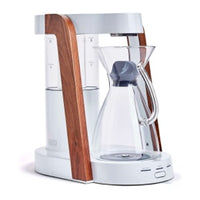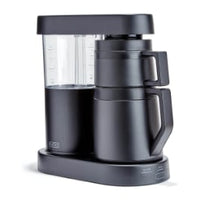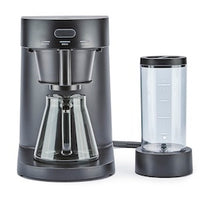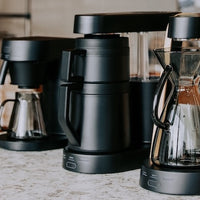Coffee Brewing Techniques: A Beginner’s Step-by-Step Guide
Coffee is more than just a morning ritual; it’s an art form that brings together flavors, aromas, and techniques. Mastering various coffee brewing techniques can elevate your daily cup from ordinary to extraordinary. This guide will explore essential methods for brewing coffee, including a closer look at pour-over coffee, as well as how automated coffee makers can enhance your brewing experience.
Understanding Coffee Brewing Techniques
The beauty of coffee lies in its versatility. There are numerous brewing methods, each offering a unique flavor profile and experience. Understanding these techniques allows coffee enthusiasts to experiment and find their perfect cup.
Why Brewing Techniques Matter
Brewing techniques influence the extraction of flavors from coffee grounds. The right method can enhance or mute certain flavors, impacting the overall taste of your coffee. Here are some key factors affected by brewing techniques:
-
Water Temperature: Different methods require varying water temperatures, affecting extraction rates.
-
Brew Time: Longer brew times can lead to over-extraction, making coffee bitter, while shorter times can under-extract, resulting in a weak flavor.
-
Grind Size: The grind size of coffee beans impacts extraction. Finer grinds are typically used for methods requiring shorter brew times, while coarser grinds are better for longer methods.
Common Brewing Methods
Understanding the most popular coffee brewing techniques can help you choose the right method based on your preferences. Here are some of the most common methods:
-
Drip Coffee: Often made with an automatic coffee maker, this method is convenient and can brew multiple cups at once.
-
French Press: This method allows for full immersion of coffee grounds, resulting in a rich and full-bodied flavor.
-
Pour-Over: Known for its precision, pour-over coffee involves manually pouring hot water over coffee grounds, allowing for greater control over extraction.
-
Espresso: This method uses high pressure to force hot water through finely-ground coffee, creating a concentrated shot with rich flavor.
-
Cold Brew: Made by steeping coarsely-ground coffee in cold water for an extended period, this method produces a smooth, less acidic coffee.
Pour-Over Coffee: A Detailed Exploration
Pour-over coffee has gained popularity among coffee aficionados for its ability to produce a clean and flavorful cup. This method requires a few tools and a bit of practice but rewards you with a brew that highlights the unique characteristics of the coffee beans.
Equipment Needed for Pour-Over
To get started with pour-over coffee, you'll need:
-
A pour-over dripper (like a Hario V60 or Chemex)
-
Coffee filter
-
Freshly roasted coffee beans
-
Grinder (preferably a burr grinder for consistency)
-
Kettle (preferably a gooseneck kettle for precision pouring)
-
Scale (for measuring coffee and water)
-
Timer

Step-by-Step Guide to Pour-Over Coffee
Follow these essential steps to brew the perfect cup of pour-over coffee:
-
Measure Your Coffee: Start by weighing your coffee beans. A common ratio is one gram of coffee to 15-18 grams of water, but feel free to adjust based on personal preference.
-
Grind the Coffee: Grind the beans to a medium-coarse consistency, similar to sea salt. This will ensure optimal extraction during brewing.
-
Prepare the Filter: Place the coffee filter in the dripper and rinse it with hot water. This removes any paper taste and preheats the dripper.
-
Add Coffee Grounds: Place the dripper over your coffee mug or carafe and add the coffee grounds.
-
Bloom the Coffee: Pour a small amount of hot water (about twice the weight of the coffee) over the grounds to allow them to bloom. Wait for about 30 seconds.
-
Continue Pouring: Slowly pour the remaining water over the coffee in a circular motion, ensuring even saturation. The total brew time should be around three to four minutes.
-
Enjoy Your Coffee: Once brewed, remove the dripper and savor your cup of pour-over coffee.
How Automated Coffee Makers Enhance Your Brewing Experience
While manual brewing methods like pour-over offer precision and control, automated coffee makers provide convenience without sacrificing quality. Understanding how these machines work can help you appreciate their role in the coffee brewing process.
Benefits of Automated Coffee Makers
Automated coffee makers have evolved significantly over the years, incorporating advanced features that enhance the brewing experience. Here are some benefits:
-
Consistency: Automated coffee makers maintain precise water temperature and brewing time, ensuring consistent results with each brew.
-
Convenience: Many machines come with programmable settings, allowing you to set a timer for your coffee to be ready when you wake up.
-
Ease of Use: With just a push of a button, you can brew multiple cups of coffee without the need for manual intervention.
Popular Features in Automated Coffee Makers
When selecting an automated coffee maker, consider these popular features that can enhance your brewing experience:
-
Built-in Grinder: Some models include a grinder, allowing you to brew with fresh coffee grounds every time.
-
Custom Brew Strength: Many machines offer options to adjust brew strength, enabling you to choose between a regular or bold flavor.
-
Temperature Control: Some advanced models allow you to set the brewing temperature, giving you more control over extraction.
Common Mistakes in Coffee Brewing Techniques
Even seasoned coffee drinkers can make mistakes that affect the quality of their brew. Awareness of these common errors can help improve your coffee experience.
Misconceptions and Mistakes to Avoid
-
Using Old Coffee Beans: Freshness matters. Coffee beans lose flavor over time, so always use freshly roasted beans for the best results.
-
Incorrect Grind Size: Using the wrong grind size can lead to over-extraction or under-extraction. Always match the grind size to your brewing method.
-
Neglecting Water Quality: The quality of water used for brewing can significantly impact flavor. Use filtered water for the best taste.
-
Not Measuring Ingredients: Consistency is key in coffee brewing. Always measure coffee and water to maintain the same flavor profile.
The Intersection of Coffee Brewing Techniques and Ratio Coffee
Understanding various coffee brewing techniques can significantly enhance your coffee experience, and Ratio Coffee is dedicated to providing tools that align with this knowledge. Ratio Six coffee maker is designed with precision and quality in mind, catering to both coffee enthusiasts and design-conscious homeowners.
Visit our website or contact us for more information on how our products can enhance your coffee brewing techniques. Discover the perfect balance of convenience and quality with Ratio Coffee. Your journey to exceptional coffee starts here.
 Ratio Eight S2
Ratio Eight S2
 Ratio Eight Original
Ratio Eight Original
 Ratio Six
Ratio Six
 Ratio Four
Ratio Four
 Compare Machines
Compare Machines






